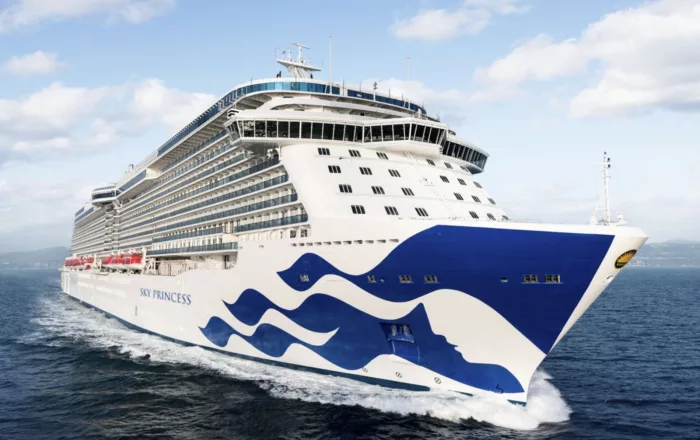
Princess Cruises
Credited with introducing millions of Americans to the concept of a modern cruise holiday, Princess Cruises is still innovating to this day.
Sporting a fleet of 17 ships with capacities ranging from 2,000 to 4,300 passengers, the line is best known for its Alaskan cruises, but travels to destinations the world over.
With an emphasis on destination leadership and local expertise, Princess is an excellent choice for the discerning traveller seeking to sail in comfort.
3560
Passengers
1346
Crew
2017
Launched
141000t
Tonnage
330m
Length
66m
Width
22kts
Speed
15
Decks
AUS
Currency
Cruise Itinerary
Day 1
Barcelona, Spain
Day 2
At Sea
Relax and make the most of the myriad of facilities available on board the ship, from fantastic entertainment to delicious and diverse dining options.
Day 3
Málaga, Spain
Day 4
Gibraltar, Gibraltar
Day 5
Cádiz, Spain
Day 6
At Sea
Relax and make the most of the myriad of facilities available on board the ship, from fantastic entertainment to delicious and diverse dining options.
Day 7
Vigo, Spain
Day 8
At Sea
Relax and make the most of the myriad of facilities available on board the ship, from fantastic entertainment to delicious and diverse dining options.
Day 9
Southampton, England
Days 10 - 12
At Sea
Relax and make the most of the myriad of facilities available on board the ship, from fantastic entertainment to delicious and diverse dining options.
Day 13
Reykjavík, Iceland
Day 14
Isafjørdur, Iceland
Wheelchair Access Limited
Day 15
Grundarfjørdur, Iceland
Wheelchair Access Limited
Days 16 - 19
At Sea
Relax and make the most of the myriad of facilities available on board the ship, from fantastic entertainment to delicious and diverse dining options.
Day 20
Charlottetown, Prince Edward Island, Canada
Day 21
Sydney, Nova Scotia, Canada
Day 22
Halifax, Nova Scotia, Canada
Day 23
At Sea
Relax and make the most of the myriad of facilities available on board the ship, from fantastic entertainment to delicious and diverse dining options.
Day 24
Boston, Massachusetts, United States

Day 1
Barcelona, Spain

Day 2
At Sea

Day 3
Málaga, Spain

Day 4
Gibraltar, Gibraltar

Day 5
Cádiz, Spain

Day 6
At Sea

Day 7
Vigo, Spain

Day 8
At Sea

Day 9
Southampton, England

Days 10 - 12
At Sea

Day 13
Reykjavík, Iceland

Day 14
Isafjørdur, Iceland

Day 15
Grundarfjørdur, Iceland

Days 16 - 19
At Sea

Day 20
Charlottetown, Prince Edward Island, Canada

Day 21
Sydney, Nova Scotia, Canada

Day 22
Halifax, Nova Scotia, Canada

Day 23
At Sea

Day 24
Boston, Massachusetts, United States
Ship Details


Princess Cruises
Majestic Princess
From exciting dining and entertainment options to wondrous destinations, you'll see the world in a whole new way
Cabins
All Prices








